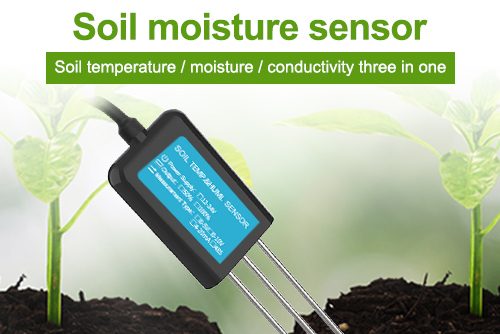The importance of soil moisture for sustainable agricultural practices cannot be overstated. With the help of modern technology, soil moisture sensor have become a valuable tool for farmers, enabling real-time monitoring of soil moisture levels. These sensors, coupled with advanced data analysis techniques, provide valuable insights into soil health and irrigation needs, leading to improved agricultural productivity.
Soil Moisture Sensors: Monitoring Soil Health

Soil moisture sensor are small devices that measure the moisture content of soil. They work by gauging the electrical conductivity or dielectric constant of the soil, which varies depending on the moisture content. The sensors transmit the data to a centralized system or handheld device for analysis and comparison against historical data. Farmers can use this information to determine optimal irrigation times and quantities, preventing over- or under-watering of crops.
Benefits of Soil Moisture Sensors for Farmers

- Precise Irrigation: Soil moisture sensors allow farmers to precisely determine when and how much water their crops require. By monitoring soil moisture levels in real-time, farmers can ensure that their crops receive adequate water without overburdening the soil or causing waterlogging. This precise irrigation not only improves yields but also saves water resources.
- Reduced Labor Costs: Manual monitoring of soil moisture levels can be time-consuming and labor-intensive. However, soil moisture sensors automate this process, reducing the need for frequent manual checks. Farmers can focus on other essential tasks, such as crop management or harvesting, knowing that their soil moisture levels are being effectively monitored by the sensors.
- Early Warning System: Soil moisture sensors can serve as an early warning system for impending drought or waterlogging conditions. By continuously monitoring soil moisture levels, farmers can detect changes in soil health and take appropriate measures to safeguard their crops against potential damage. This预警系统帮助农民采取及时的预防措施,从而减少损失。
- Enhanced Crop Yields: Accurate irrigation management enabled by soil moisture sensors leads to higher crop yields. By providing optimal moisture levels to the roots, farmers can promote healthy growth and development of their crops. This translates into increased yields, higher profits, and a more sustainable agricultural sector.
- Better Resource Management: Soil moisture sensors enable farmers to manage water resources more efficiently. By precise irrigation scheduling, farmers can conserve water while meeting the needs of their crops. This not only benefits the farmer’s bottom line but also contributes to sustainable water use in agriculture, crucial in regions facing water scarcity or limited water availability.
How Soil Moisture Sensor Work

Soil moisture sensors work by gauging the electrical conductivity or dielectric constant of the soil, which vary depending on the moisture content. As soil moisture increases, so does its ability to conduct electricity. Similarly, as moisture content decreases, the dielectric constant of the soil also changes. These sensors exploit these variations to accurately measure soil moisture levels.
Types of Soil Moisture Sensors
There are various types of soil moisture sensors available, each with its unique advantages and disadvantages:

- Insertion-Type Sensors: These sensors are inserted directly into the soil to measure moisture content at different depths. They provide accurate readings but require frequent calibration and are prone to clogging if not properly maintained.
- Non-Insertion-Type Sensors: These sensors measure soil moisture from the surface without penetrating the soil. They are easy to install but may not provide accurate readings in all soil types due to limitations in penetration depth.
Future Developments in Soil Moisture Sensors
The future of soil moisture sensor holds exciting possibilities with ongoing technological advancements in sensor miniaturization, data analytics, and wireless communication capabilities. Future sensors may be equipped with additional functionalities such as temperature sensing, pH measurement, or nitrate detection to provide a more comprehensive understanding of soil health and nutrient status. Integration with precision agriculture systems will further enhance decision-making processes and precision irrigation practices on farms, leading
